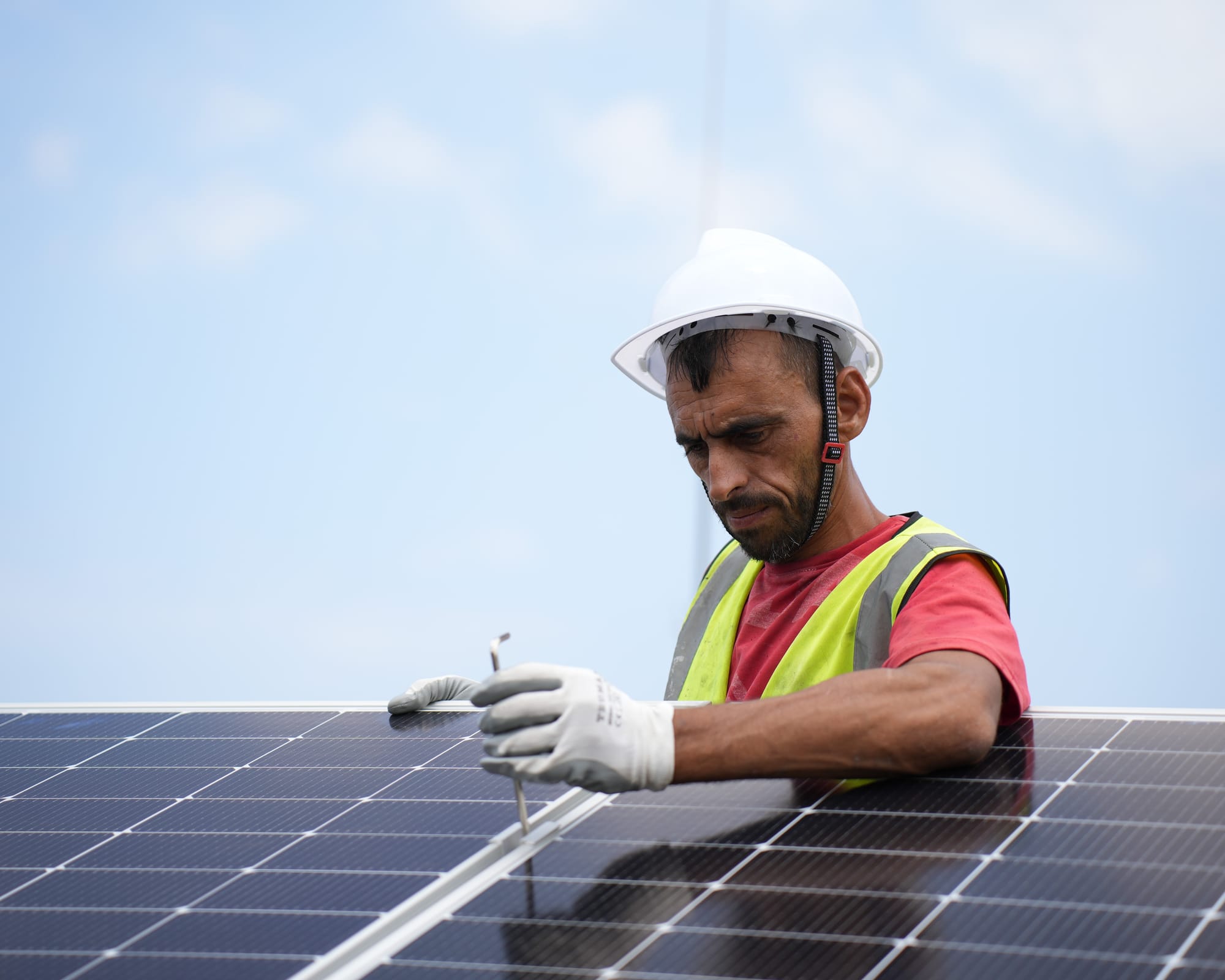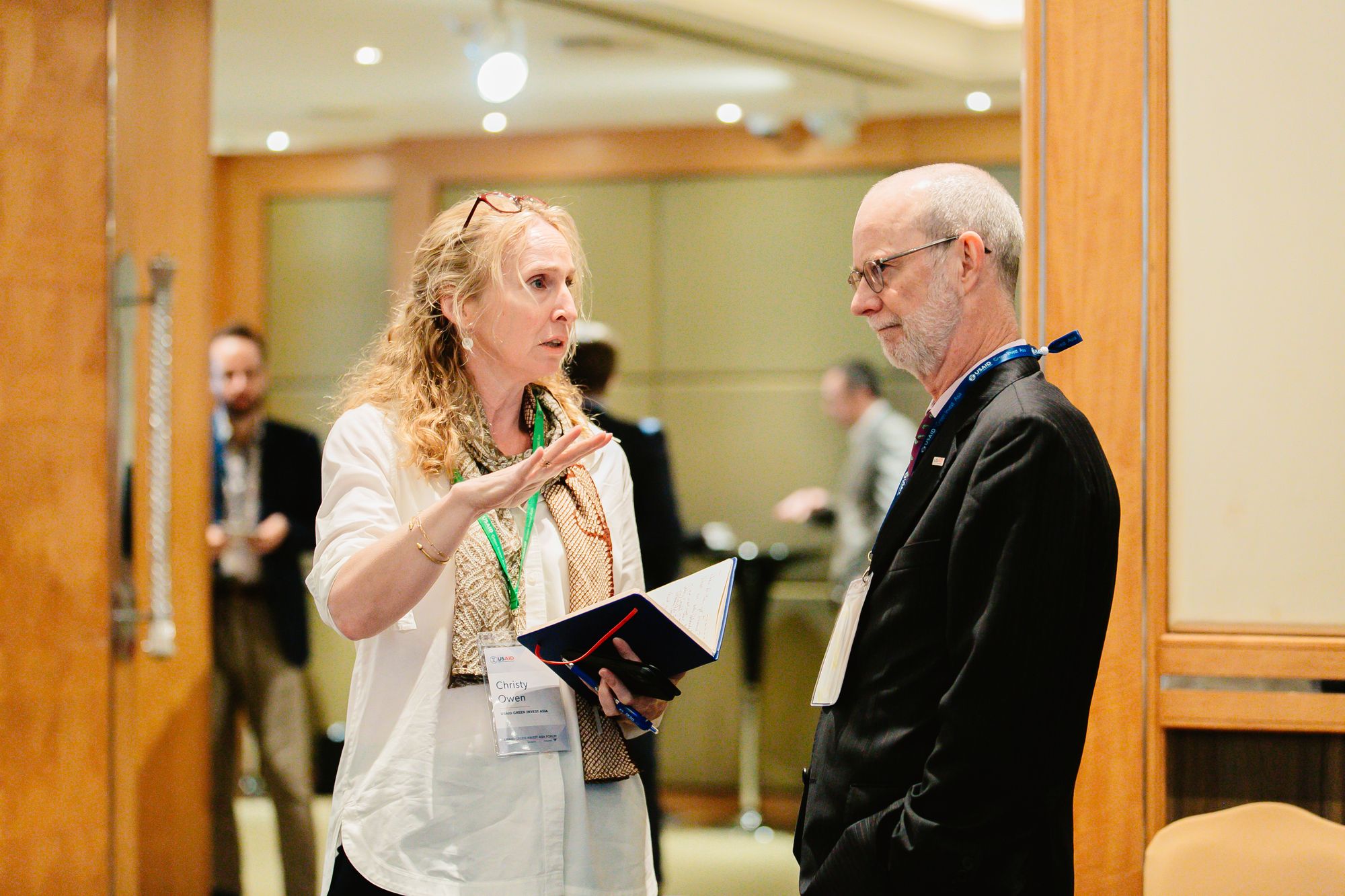Approximately three-fourths the size of California, the Philippines is brimming with biodiversity. It is among the world’s 17 megadiverse countries that host more than 70 percent of the world’s plant and animal species. However, systems and local capacity to conserve, protect, and channel rich biodiversity and ecosystems toward sustainable development are underdeveloped—leaving the country’s more than 700 threatened species and their habitats at high risk to unchecked resource extraction, poaching, and illegal trade.
In 2014, the U.S. Agency for International Development (USAID)’s Biodiversity Policy addressed the very issues facing the Philippines. By 2016, the agency launched the DAI-led Protect Wildlife activity to align conservation policy with on-the-ground wildlife management and enforcement in the Philippines. The activity worked in target landscapes and seascapes to reduce threats to biodiversity, reduce poaching and use of illegally harvested wildlife species and byproducts, and improve ecosystem goods and services for human wellbeing.

Photo: USAID Philippines Protect Wildlife.
Allure of Wildlife Makes Philippines a Criminal Target
Its geography and highly dispersed natural resources make the Philippines one of the greatest draws for poaching, trafficking, and illegal trade of wildlife species and byproducts. Illegal wildlife trade is the fourth-largest illicit trade in the world—behind weapons, drugs, and people. The Asian Development Bank estimates the value of trafficked Philippine wildlife and resources at roughly $23 billion.
Notable interdictions and seizures in recent years include 450 endangered animals valued at $1 million from Indonesia in April 2019, 1,100 kilos of pangolin scales valued at nearly $1 million in September 2019, more than 120,000 tons of giant clam shells worth approximately $41 million from General Santos City in October 2019, and 40 live pangolins valued at approximately $16,000 seized in July 2018 and January 2020 operations in Palawan.
Wildlife trafficking networks leverage weak points in natural resources governance and enforcement—upland and rural poverty, limited coordination between enforcement units, and uneven capacity—to manage poaching and trafficking of wildlife and transshipment through the Philippines to end-markets. Traffickers corrupt local communities who engage as poachers and consolidators, and officials who act as fixers to facilitate transport and arrange export via forged paperwork and other forms of smuggling. Increasingly, international crime syndicates execute transactions online to hide illegal finances and protect network leaders.

Photo: USAID Philippines Protect Wildlife.
Partnerships Boost Results
Our principal counterpart in all our activities was the Department of Environment and Natural Resources (DENR) Biodiversity Management Bureau, in coordination with the DENR Forest Management Bureau, Department of Agriculture-Bureau of Fisheries and Aquatic Resources, National Commission on Indigenous Peoples, and various national law enforcement agencies.
Locally, we worked directly with DENR regional offices; provincial and community environment and natural resources offices; and provincial, city, and municipal local government units, as well as local offices of the Bureau of Fisheries and Aquatic Resources and the National Commission on Indigenous Peoples. We also worked with nongovernmental and civil society organizations; colleges and universities; and land and resource managers, such as ancestral domain and tenure holders and fisherfolk and coastal community organizations.
Mount Mantalingahan Protected Area Superintendent Mildred Suza said Protect Wildlife helped her and her team better interpret existing DENR guidelines and that multistakeholder consultations and access to geographic information systems (GIS) technical assistance enriched the process. “It was important [to me that] the resulting management plan is in harmony with other plans, includes civil society participation, and reflects the needs of our indigenous communities,” she said.

Photo: USAID Philippines Protect Wildlife.
Our Approach
The ecosystems that underpin the country’s biodiversity are spread across regions, provinces, and cities, with segments under different land and resource use systems and only limited coordination between their respective management authorities. One key biodiversity area in the Philippines may contain a legislated protected area, a local government-managed forestland, and an ancestral domain, with each having different management requirements and governance bodies. When zoning rules and land and resource use within an ecosystem are misaligned, habitats can become fragmented and ecosystem services disrupted.
Rather than introduce new tools and approaches, we sought to use what was in place to help partners view their natural resources and operate at scale at the landscape and seascape level. This approach features two key themes: integrating land and resource use management plans, policies, and stakeholder groups; and adding value—approaching partners where they are and offering to help them strengthen and align their ongoing initiatives to better conserve and protect biodiversity and promote their constituents’ well-being.
By raising awareness about ecosystems and the goods and services they provide—supplying water, regulating flooding and storm surges, and cycling nutrients that fertilize the land—and the ecological connectivity that underpins them, we drew in partners with a joint commitment to work together across jurisdictions at the landscape-seascape scale. This awareness was central to the activity’s success in securing stakeholders’ commitment to coordination and complementarity between management plans and activities.

Photo: USAID Philippines Protect Wildlife.
Mapping Out the Future
With those commitments, Protect Wildlife and its partners mapped landscapes and seascapes as a guide to plan joint activities, moving beyond GIS to chart the following features in a given landscape-seascape:
- Biophysical characteristics: Watersheds, biodiversity corridors, forestlands, grasslands, wildlife habitats, and vulnerable or disaster-prone areas.
- Legal classifications: Laws and policies on land and resource use, environmental protection, and economic development—covering areas designated as ancestral domains, alienable and disposable lands, protected areas, forestlands, and conservation areas.
- Flow of ecosystem goods and services: Distribution of services, infrastructure, capital, and political power, and the degree of access to knowledge, data, and resources among those who protect or conserve ecosystem goods and services and those who depend upon or exploit them. This information provides insight into the flow of wildlife species and by-products from or through landscapes-seascapes to off-site areas.
Protect Wildlife and its partners incorporated these layers into the landscape-seascape maps, then consulted with communities to map in their actual land and resource use practices, which do not always align with policy or comport with stated objectives on ecological connectivity. Once the land and resource use maps were validated in this way, we opened discussion on the adjustments needed to promote the flow of ecosystem goods and services across land-use boundaries, conserve critical biodiversity assets, and strengthen local livelihoods.
The working groups reached agreement on the protection zones that bind key ecosystems, habitats, and unique natural and cultural attractions; production areas, which become focal sites for social, technical, economic, and infrastructure investments that can increase productivity and strengthen value chains in upland areas; and settlements and built-up areas, which must be properly zoned to reduce the adverse impacts of climate-related disasters.
To ensure connectivity, the working groups negotiated between DENR and local authorities regarding zoning decisions in a shared landscape-seascape. The goal was to ensure that border areas between their respective management plans and zoning regimes are complementary and feature compatible land and resource use classifications and rules. Once complete, the groups developed management and financial plans, which now function as a guidebook for protection, conservation, and development activities, with rules on restricted land and resource uses and requirements for permitting.

Photo: USAID Philippines Protect Wildlife.
Where Land Meets Sea
Together, maps and management guide conservation and development activities within a landscape-seascape. Protect Wildlife added value to activities by contributing to the implementation of management plans and advancing conservation, protection, and development objectives. Our work involved:
- Training local campaigners on behavior change communications techniques: The project reached nearly 1.12 million people through 25 site-level behavior-change campaigns (our goal was 300,000).
- Enabling finance for conservation efforts: Partners generated $625,000 in revenues from the sale of ecosystem goods and services (our goal was $500,000).
- Supporting research and conservation education: The project worked with local universities to ensure that future scientists, businesspeople, policymakers, and enforcers are informed about the significance of wildlife and biodiversity conservation, as well as the laws that govern them. In addition to supporting 27 research initiatives, the project successfully advocated to include environmental law in the national Commission on Higher Education core curriculum for a degree in criminology—ensuring that the country’s criminology students will be better prepared to address wildlife and environmental crime in their careers.
- Training personnel to enforce environmental and wildlife laws: The project trained appropriate personnel in surveillance, enforcement operations, and prosecution of offenders, while also strengthening policy and processes in line with management plans and zoning regimes. In Palawan alone, newly trained enforcement officers helped double the number of apprehensions since 2017, compared to 2013–2016.
All told, Protect Wildlife helped improve natural resource management of more than 750,000 hectares of biologically significant areas (our goal was 500,000); and avoid 1.25 million metric tons of greenhouse gas emissions through sustainable landscape activities focused on protecting and managing forest cover in protected areas and forests (our goal was 703,930).
“People can now better understand their connection to nature,” said Rebecca Paz, Protect Wildlife Chief of Party. “Research informs science-based policy decisions that strengthen biodiversity conservation and promote sustainable development. Communities and local governments have joined forces to safeguard protection and conservation areas and prevent illegal poaching and resource extraction, doing their part to preserve ecosystem balance.”
The actual impact of our activities on reducing biodiversity threats will take time to materialize and to study, and will depend largely on continued national government support and an increasing flow of technical and financial resources to sites over the coming years. If properly harnessed and cultivated, the work to strengthen capacities in habitat management and wildlife and environmental law enforcement; to generate increased support and coordination from local governments, civil society, private sector, and academe; and to improve the behaviors of communities and institutions will set conservation, national resource management, and enforcement practitioners in the Philippines on a pathway to meet Protect Wildlife’s desired final outcomes.
Joey Manfredo was Deputy Chief of Party on the Protect Wildlife project. To read the full report, click here.




